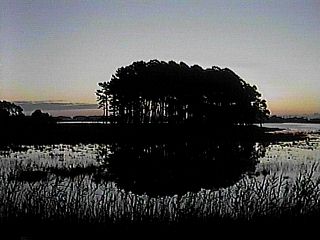
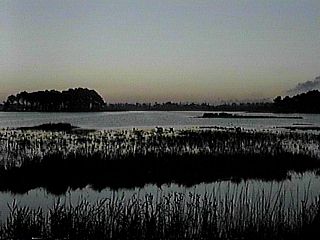
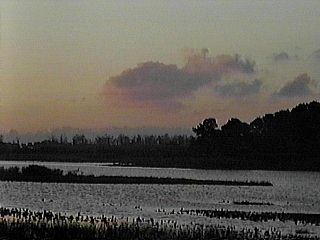
The rising sun brought many birds out into the ponds and impoundments. I heard the whinny of the famous Chincoteague ponies behind me, but did not see them.
I woke up early on Wednesday morning, so early in fact that I arrived
at Chincoteague National Wildlife Refuge before the sun was up. As I waited,
I enjoyed watching the marshes brighten as the day dawned.



The rising sun brought many birds out into the ponds and impoundments.
I heard the whinny of the famous Chincoteague ponies behind me, but did
not see them.
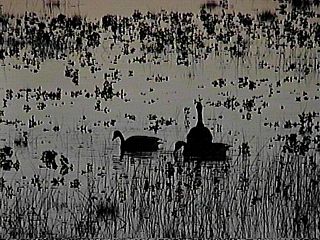 |
Sitka elk splashed their way through Swan Cove. They are an Asian species that was introduced to the island and are distinguished from the native white-tailed deer by their smaller size and white rumps. They prefer the wetter habitats |
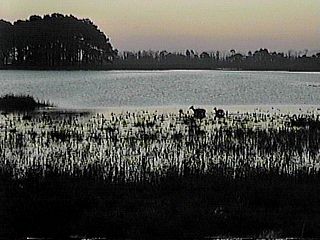
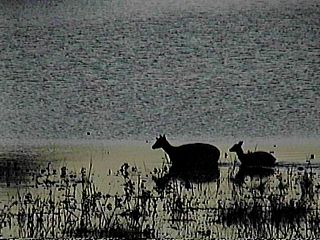
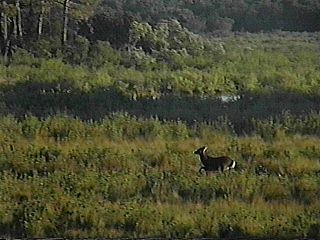
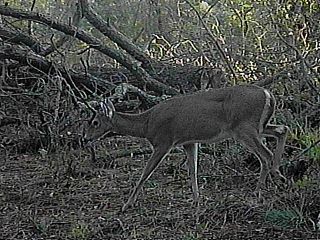
I took a walk along
the Woodland Trail and headed for the wild pony outlook. I did not see
any of the ponies there, but did come across some more of the Sika elk.
On the way back, I saw many American robins and northern cardinals. Also
saw red-bellied woodpeckers and yellow-shafted flickers. I paused for a
while to watch some apparently fearless white-tailed deer at close range.
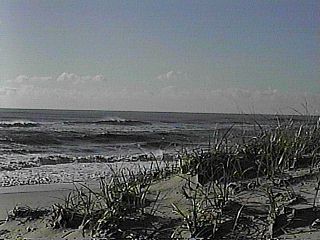
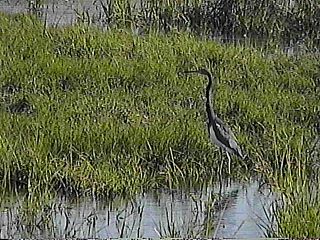
Continuing on, I watched the egrets, cormorants, ducks, and terns in the ponds. I saw three of the ponies in the distance. One was nuzzling another. I continued on and headed for Tom's Cove. Today, there was no wind and the setting was calm and peaceful. There were not too many birds around, mainly ring-billed and laughing gulls. I turned around and headed back. Had some nice views of a tricolored heron. I drove on a short distance and came upon the same ponies that I had seen earlier. This time, they were grazing at the side of the road.
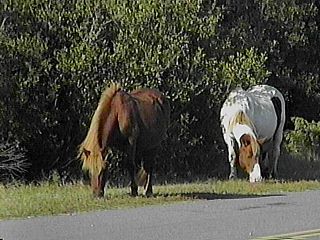
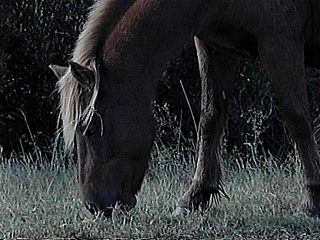
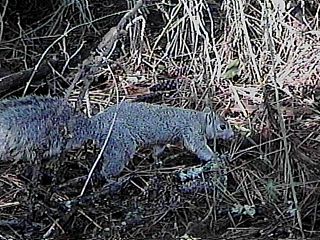 I walked
the Lighthouse Trail and before I had to turn back because of some deep
puddles, I came across one of the Delmarva Peninsula fox squirrels. This
is an endangered species - it's size will strike terror in the heart of
anyone who feeds birds in a backyard.
I walked
the Lighthouse Trail and before I had to turn back because of some deep
puddles, I came across one of the Delmarva Peninsula fox squirrels. This
is an endangered species - it's size will strike terror in the heart of
anyone who feeds birds in a backyard.
I wanted to drive the wildlife loop, but it would not be open until
three o'clock. I had been at the refuge for more than three and a half
hours already that day and did not know whether it would pay to wait another
four and a half hours. (There would have been no question, had I not been
returning to New York later.) I went to the visitors center and asked what
I was likely to see on the loop that I had not already seen. The answer
was snow geese. Since the refuge was founded as a haven for them, I felt
that I should make the attempt to see some. I was told that there was a
flock of about twenty not too far down the road from the center. If I took
a short walk, I should be able to see them. (While the road is closed to
vehicular traffic before 3:00 PM, it is open to pedestrians and bicyclists
whenever the refuge is open.) I went back to the motel, checked out, and
returned to the refuge within twenty minutes. I started the walk towards
the geese. What a difference a day makes. Not a cloud in the sky; the warmth
of the sun was tempered a cool, light breeze. I walked towards a blind
and came upon the snow geese which actually numbered over a hundred. A
group of four ponies grazed not far from the flock. Large numbers of Canada
geese were also in the pool.
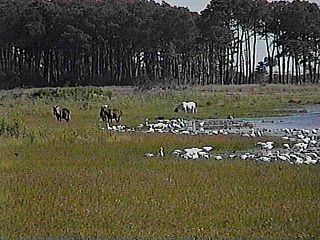
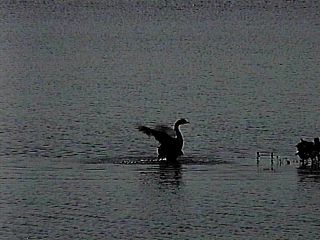
While walking away from the blind, I watched turtles on a log, saw the pine trees in the background and the cattails and marsh grasses along the ponds. It was a truly peaceful setting. I was enjoying it so much that instead of returning to my car, I decided to walk the entire 3.2 mile loop. And it was a good decision. I sat and watched some Canada geese for a while; observed several large flocks of snow geese come in; saw blue-winged teal, green-winged teal, gadwalls, and other ducks; watched a male goldfinch feed his wing-shivering, begging young; but mostly just reveled in the extraordinary beauty of the place. Even the pine trees that had been decimated by a beetle infestation had their own form of beauty. The wildlife loop was an exquisite way to end the trip.
![]() Back
to home page Your
comments and suggestions will be appreciated
Back
to home page Your
comments and suggestions will be appreciated
Copyright © 1996 Richard L. Becker